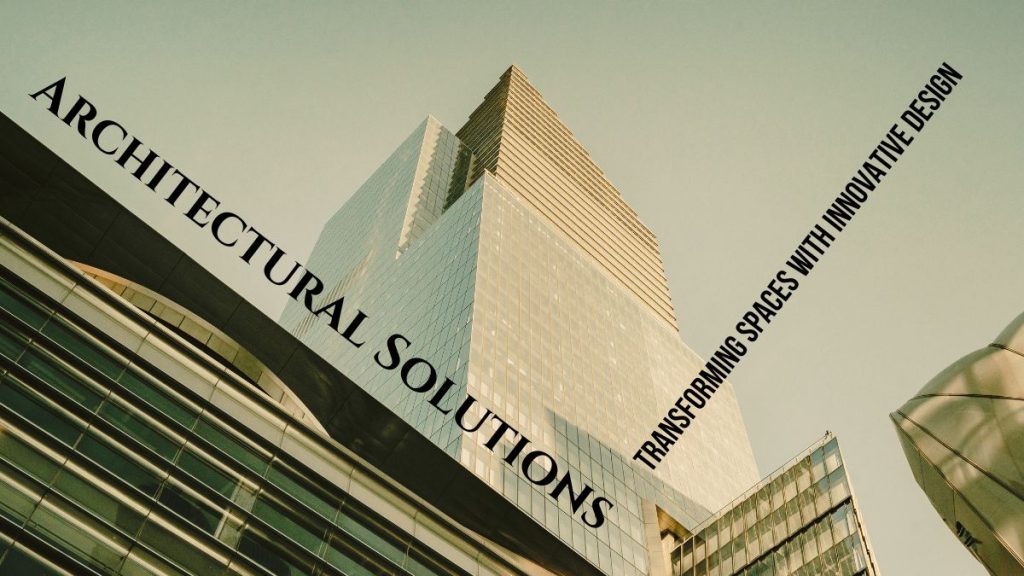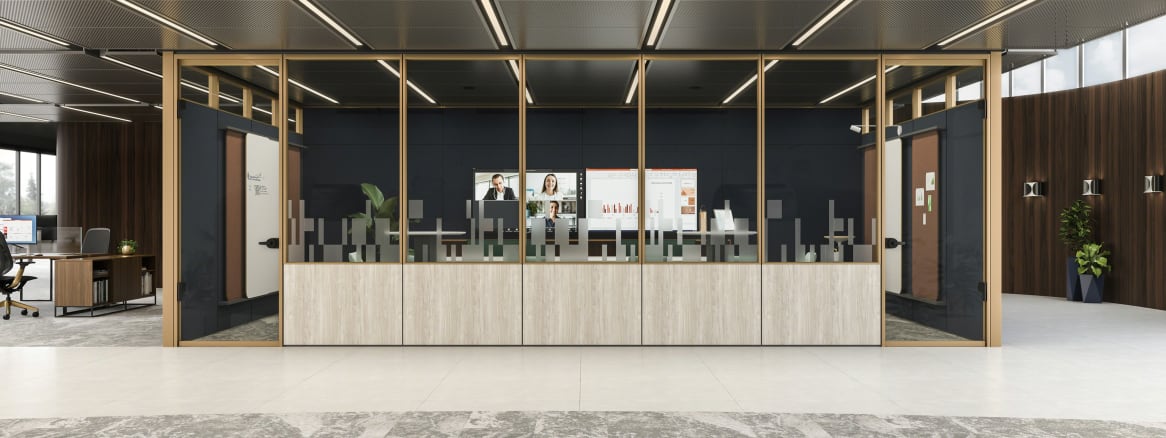Architectural solutions offer innovative ways to design and build spaces. They address functional, aesthetic, and environmental needs.
In today’s fast-paced world, architecture plays a crucial role in our daily lives. From homes to offices, public spaces to urban landscapes, architectural solutions shape our environments. They enhance our quality of life by providing structures that are not only visually appealing but also sustainable and efficient.
Architects use their expertise to solve complex design problems, ensuring that spaces meet the needs of their users. Whether you’re planning a new building or renovating an existing one, understanding the various architectural solutions available can help you make informed decisions. This blog will explore different architectural solutions, shedding light on their importance and benefits. Stay tuned to discover how these solutions can transform spaces and improve your living experience.
Related Article: What Characteristics Identify Early Modern Architecture – A Complete Guide
You may also read: Architectural Wonders: Marvels of Modern Design

Related Article: How Does Architecture Help Society: Shaping Our World
You may also read: Best Architecture Books to Inspire Your Next Design Masterpiece
Innovative Design Principles
Innovative design principles are transforming the world of architecture. These principles blend creativity with functionality, ensuring structures meet both aesthetic and practical needs. Embracing these principles can lead to buildings that are not only beautiful but also sustainable and efficient.
Sustainable Materials
Using sustainable materials is essential in modern architecture. These materials reduce environmental impact and promote energy efficiency. Recycled steel, bamboo, and reclaimed wood are popular choices. They offer strength and durability while minimizing waste. Green roofs and solar panels are also part of sustainable design. They help in reducing energy consumption and improving insulation.
Modern Aesthetics
Modern aesthetics focus on clean lines and open spaces. This design principle values simplicity and functionality. Large windows and open floor plans create a sense of space and light. Minimalistic designs with neutral colors are preferred. They provide a timeless and elegant look. Integrating nature into the design is also a key aspect. Indoor plants and natural light enhance the living environment.
Smart Home Integration
Smart home integration is transforming the way we live. It combines advanced technology with architecture to create more efficient, comfortable, and secure homes. The integration of smart systems allows homeowners to control various aspects of their home environment with ease. From lighting and temperature to security and entertainment, everything can be managed from a single device.
Automated Systems
Automated systems play a crucial role in smart homes. They enable effortless control of household functions. Smart thermostats adjust the temperature based on your preferences. Automated lighting systems turn lights on and off based on your schedule. These systems can be controlled remotely using a smartphone or tablet.
Voice-activated assistants like Alexa and Google Home offer hands-free control. They can manage everything from playing music to setting reminders. Home automation simplifies daily tasks and enhances convenience.
Energy Efficiency
Smart home integration promotes energy efficiency. Automated systems reduce energy consumption by optimizing usage. Smart thermostats learn your habits and adjust heating and cooling accordingly. This reduces unnecessary energy use and lowers utility bills.
Energy-efficient lighting systems, like LED bulbs, use less power. Smart plugs allow you to control appliances remotely, preventing energy waste. Monitoring systems track energy usage and provide insights to help save more energy. Smart homes contribute to a greener and more sustainable environment.
Related Article: Organic Architecture: Harmonizing Nature and Design

Credit: www.steelcase.com
Related Article: How to Choose the Right Architect: Top Expert Tips
Adaptive Reuse Of Structures
Adaptive reuse of structures is an efficient and creative architectural solution. It involves repurposing old buildings for new uses. This approach saves resources and preserves history. It also offers a unique aesthetic that new constructions can’t match. Below, we explore two key aspects: Historical Preservation and Functional Repurposing.
Historical Preservation
Historical preservation focuses on maintaining the original character of a building. This process respects the past while adapting to present needs. By keeping historical elements, we honor the craftsmanship of earlier times.
There are several techniques for historical preservation:
- Restoring original materials
- Maintaining architectural details
- Using period-appropriate finishes
Preservation often involves detailed research. Architects study the building’s history and original design. This ensures that any modifications respect the building’s past.
Functional Repurposing
Functional repurposing adapts old structures for modern use. This could mean converting a factory into apartments or a church into a library. The goal is to give new life to the old building.
Common examples of functional repurposing include:
- Industrial spaces turned into lofts
- Warehouses converted to offices
- Historic homes transformed into museums
The benefits of functional repurposing are numerous:
- Reduces waste by reusing materials
- Preserves cultural heritage
- Creates unique and inspiring spaces
Adaptive reuse is a sustainable and innovative approach. It bridges the gap between old and new. By preserving history and repurposing spaces, we create lasting and meaningful architecture.
Urban Design Trends
Urban design trends are shaping the future of our cities. These trends focus on creating sustainable, livable, and vibrant urban environments. Architects and planners are prioritizing green spaces and mixed-use developments. These elements enhance community life and promote environmental health.
Green Spaces
Green spaces are vital for urban areas. They provide a breath of fresh air in cities. Parks, gardens, and green rooftops are becoming common. These areas offer a place for relaxation and recreation. They also help reduce pollution and improve mental health.
Communities benefit greatly from having access to nature. Green spaces promote physical activity and social interaction. They can be small pocket parks or large urban forests. The goal is to integrate nature into daily city life. This trend is about more than just beauty. It’s about creating healthier, happier communities.
Mixed-use Developments
Mixed-use developments combine residential, commercial, and recreational spaces. These developments create vibrant, walkable neighborhoods. Residents can live, work, and play in the same area. This reduces the need for long commutes and fosters community bonds.
These developments often feature shops, offices, and apartments in one complex. This setup encourages a more balanced lifestyle. People can easily access amenities and services. Mixed-use developments also boost local economies. They create job opportunities and support small businesses.
Urban design trends like these are transforming our cities. They aim to create places where people can thrive. Green spaces and mixed-use developments are key components. They contribute to a sustainable and enjoyable urban experience.
Related Article: Modern Architecture Styles: Discover Cutting-Edge Designs

Credit: www.architectmagazine.com
Related Article: Architectural Design Process: Unveiling Creativity
Interior Space Optimization
Interior space optimization is essential in modern architectural solutions. It involves maximizing the use of available space while ensuring comfort and functionality. This approach makes homes and offices more livable and efficient. Let’s explore two key aspects of interior space optimization.
Open Floor Plans
Open floor plans eliminate unnecessary walls. They create a sense of spaciousness. This layout allows for better natural light distribution. It enhances the flow between different areas. Open floor plans are ideal for social interactions. They make homes feel larger and more inviting.
Multi-functional Furniture
Multi-functional furniture serves more than one purpose. It helps save space. A sofa bed, for example, functions as seating by day and a bed by night. Storage ottomans offer seating and storage solutions. Multi-functional furniture is perfect for small spaces. It makes rooms more versatile and practical.
Related Article: Alternative Careers for Architects: Exciting New Paths to Explore

Credit: www.deviseddesign.com
Related Article: Architectural Design Concepts: Unleash Creativity
You may also read: Architectural Storytelling: Crafting Spaces with Narratives
Conclusion
Achieving architectural solutions can transform spaces beautifully and efficiently. By implementing smart designs, you create functional and aesthetic environments. Architects can solve complex problems with innovative approaches. Consider your needs and collaborate with skilled professionals for optimal results. With thoughtful planning, you enhance both form and function.
Remember, a well-designed space improves quality of life. Invest in good architecture for long-lasting benefits. Discover the potential in every project with the right solutions. Your dream space is within reach.
Related Article: The Timeless Appeal of Brick in Modern Architecture: A Complete Guide
You may also read: Architectural Journalism: Exploring the Intersection of Design and Media

Pingback: Best Architecture Books to Inspire Your Next Design Masterpiece - SpaceArc